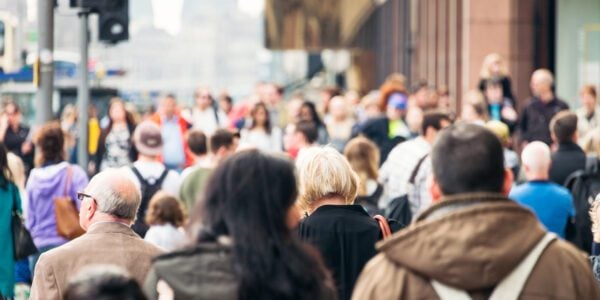Neighbourhoods investing in social cohesion programmes are twice as likely to have residents volunteering to help others during the pandemic. Volunteers themselves say they feel more optimistic about their lives, with better well-being and better connection with family and friends.
The Nuffield-funded study of over 15,000 people across the UK was carried out by Belong – The Cohesion and Integration Network and the University of Kent, looking at factors affecting social cohesion – where people connect, trust and value those from different backgrounds.
The report looks at both the experiences of people living in six local authority areas investing in social cohesion, and the experiences of people across the UK who have been volunteering during the pandemic. Overall the research makes a strong case for investment in social cohesion as a way to help people feel happier in themselves, more connected to people and place, reduce community tension and build resilience.
Compared to people living in other parts of the UK, residents of local authorities investing in social cohesion schemes – such as running social mixing and community engagement events, youth programmes and ESOL classes – were:
- Twice as likely to volunteer compared to people living elsewhere.
- Had a higher sense of neighbourliness (9.9 per cent higher).
- Had a higher level of trust in local government’s response to Covid-19 (8.2% higher).
They also maintained positive attitudes toward people from immigrant backgrounds, were more likely to donate money to charity and support online campaigns among other indicators of social cohesion.
Across the UK, when compared with others, volunteers living in any area rated themselves as:
- More optimistic for the future (5.6% higher).
- With greater subjective well-being (5.3% higher).
- With greater trust in other people to respect COVID-19 restrictions (12.2% higher).
Volunteering carried out included setting up food distribution schemes, running befriending schemes and taking calls on support phone lines to help during the pandemic.
Professor Dominic Abrams, director of the Centre for the Study of Group Processes at the University of Kent said: “Our research shows volunteering is part of a ‘cohesion net’ that seems to embrace multiple positive components: volunteers not only participate positively in the social life in their local area, they also directly benefit from this investment and seem better equipped to cope with the challenges posed by the ongoing pandemic.”
Jo Broadwood, CEO of Belong – The Cohesion and Integration Network, said: “While we’re only halfway through this major research project, the results so far are striking – investing in social cohesion brings really considerable returns, both for individuals and their communities. Being able to stay resilient, maintain community connection and prevent tensions means these communities will emerge from the pandemic more able to rebuild and recover.”
Alex Beer, Welfare Programme Head at the Nuffield Foundation said: “The COVID-19 crisis has exacerbated existing inequalities and led to an increase in loneliness for many people. Encouragingly, this research shows that local authorities that have invested in social cohesion programmes have been able to bring people and their communities together through volunteering, and that volunteering is beneficial to people’s well-being wherever they live. While volunteering will not be an option available to everyone, there are benefits to the whole community from more people becoming actively involved in the pandemic response at a local level.”
Started in March 2020 and running until Summer 2021, Beyond Us and Them will provide one of the richest sources of academic data on people’s experiences in the UK during the pandemic. Researchers are using online surveys, one-to-one interviews and focus groups to track peoples’ experiences and views on how the pandemic is affecting their relationships, neighbourhoods and everyday lives with a final report due later this year.























































